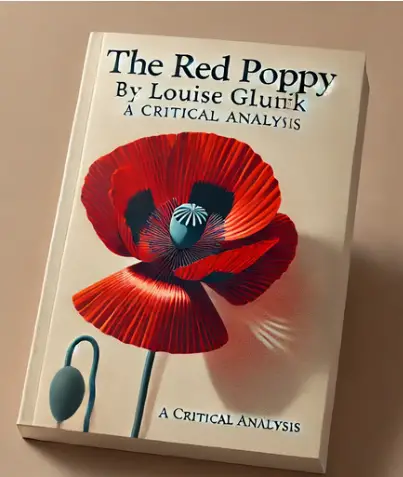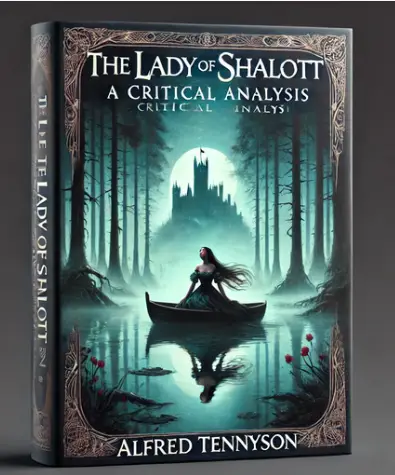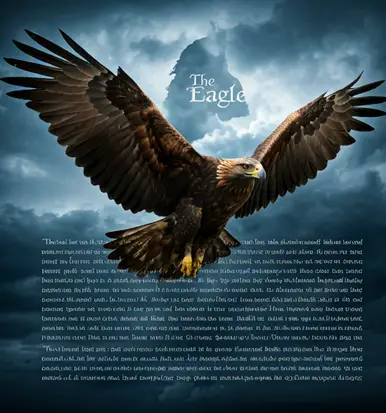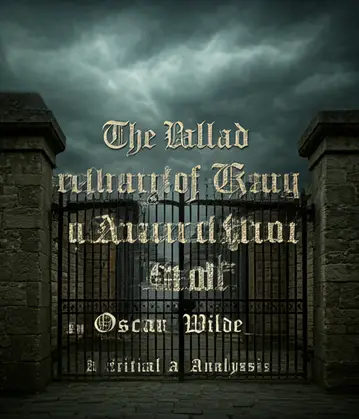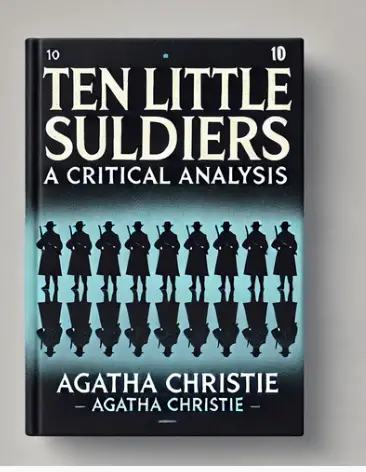
Introduction: “The Windhover” by Gerard Manley Hopkins
“The Windhover” by Gerard Manley Hopkins first appeared in 1918 as part of the posthumously published collection Poems of Gerard Manley Hopkins. This sonnet showcases Hopkins’ unique use of sprung rhythm, a metric form he developed, along with his vivid imagery and religious symbolism. The poem describes the sight of a kestrel (referred to as a windhover), a bird of prey, hovering in the air. The main qualities of the poem include its intense energy, intricate sound patterns, and rich use of metaphors that blend nature with spiritual reflection. The central idea revolves around the beauty and power of the bird, which becomes a metaphor for Christ, whose sacrifice and divine strength are mirrored in the bird’s controlled mastery of flight.
Text: “The Windhover” by Gerard Manley Hopkins
I caught this morning morning’s minion, king-
dom of daylight’s dauphin, dapple-dawn-drawn Falcon, in his riding
Of the rolling level underneath him steady air, and striding
High there, how he rung upon the rein of a wimpling wing
In his ecstasy! then off, off forth on swing,
As a skate’s heel sweeps smooth on a bow-bend: the hurl and gliding
Rebuffed the big wind. My heart in hiding
Stirred for a bird, – the achieve of, the mastery of the thing!
Brute beauty and valour and act, oh, air, pride, plume, here
Buckle! AND the fire that breaks from thee then, a billion
Times told lovelier, more dangerous, O my chevalier!
No wonder of it: shéer plód makes plough down sillion
Shine, and blue-bleak embers, ah my dear,
Fall, gall themselves, and gash gold-vermilion.
Annotations: “The Windhover” by Gerard Manley Hopkins
| Line | Annotation |
| “I caught this morning morning’s minion, king-“ | Alliteration of “morning” and “minion” creates musicality. Metaphor of “minion” (servant) implies the bird serves the morning, highlighting its position in the natural order. |
| “dom of daylight’s dauphin, dapple-dawn-drawn Falcon, in his riding” | Alliteration of ‘d’ sounds mimics the rhythm of the bird’s flight. “Dauphin” refers to the heir to the French throne, metaphorically linking the falcon to royalty. Compound words “dapple-dawn-drawn” emphasize the bird’s association with the morning light. |
| “Of the rolling level underneath him steady air, and striding” | Imagery of “rolling level” paints a picture of the horizon beneath the bird, while enjambment flows seamlessly into the next line, mimicking the smooth flight of the falcon. “Striding” suggests powerful, confident motion. |
| “High there, how he rung upon the rein of a wimpling wing” | Internal rhyme with “rung” and “wing” adds musicality. Metaphor likens the bird to a horse being “reined” in by its own control. “Wimpling” (to ripple) evokes the soft, controlled movement of the wings. |
| “In his ecstasy! then off, off forth on swing,” | Repetition of “off” conveys the sudden, effortless motion of the bird. The exclamation emphasizes the bird’s joyous flight, while “swing” suggests a graceful, curved movement. |
| “As a skate’s heel sweeps smooth on a bow-bend: the hurl and gliding” | Simile compares the bird’s flight to the smooth motion of an ice skate. Sibilance (repetition of ‘s’ sounds) enhances the fluidity and grace of the image. |
| “Rebuffed the big wind. My heart in hiding” | Personification of the wind being “rebuffed” gives the bird a sense of power. The phrase “my heart in hiding” suggests emotional restraint or awe, linking the speaker’s inner state to the bird’s mastery. |
| “Stirred for a bird, – the achieve of, the mastery of the thing!” | Internal rhyme and consonance of ‘r’ sounds tie the emotion to the bird’s achievement. “Mastery of the thing” echoes the earlier themes of control and excellence in flight. |
| “Brute beauty and valour and act, oh, air, pride, plume, here” | Alliteration of ‘b’ and ‘p’ sounds gives the line a forceful, emphatic rhythm. The enumeration of “beauty,” “valour,” and “act” contrasts the raw physical power of the bird with its spiritual significance. |
| “Buckle! AND the fire that breaks from thee then, a billion” | Metaphor: “Buckle” suggests a sudden collapse or convergence, implying the merging of physical and spiritual beauty. Hyperbole in “a billion” intensifies the magnificence of the bird’s symbolic transformation. |
| “Times told lovelier, more dangerous, O my chevalier!” | Exclamation and apostrophe (“O my chevalier!”) directly address the bird, identifying it as a knight-like figure. The contrast between “lovelier” and “dangerous” emphasizes the paradoxical nature of beauty and strength. |
| “No wonder of it: shéer plód makes plough down sillion” | Alliteration of ‘p’ sounds connects this line to the toil of labor. “Sillion” refers to the ridge of soil turned by a plough, suggesting hard work brings reward. The plough is a metaphor for everyday effort revealing hidden beauty. |
| “Shine, and blue-bleak embers, ah my dear,” | Oxymoron of “blue-bleak” suggests cold and dullness, while “embers” hints at latent energy or life. This juxtaposition mirrors the bird’s transformation from physical to spiritual. |
| “Fall, gall themselves, and gash gold-vermilion.” | Alliteration of ‘g’ sounds emphasizes the violent imagery. “Gall” and “gash” evoke pain or sacrifice, while “gold-vermilion” symbolizes the beauty and divinity that emerge from suffering, reflecting Hopkins’ religious themes. |
Literary And Poetic Devices: “The Windhover” by Gerard Manley Hopkins
| Device | Example | Detailed Explanation |
| Alliteration | “morning’s minion” | The repetition of the ‘m’ sound creates a musical quality and emphasizes the connection between the bird and the morning. Alliteration enhances the lyrical rhythm and helps establish mood. |
| Apostrophe | “O my chevalier!” | The speaker directly addresses the falcon as a “chevalier” (knight), invoking its noble, spiritual qualities. Apostrophe heightens the emotional intensity of the speaker’s admiration. |
| Assonance | “king-dom of daylight’s dauphin” | The repetition of vowel sounds, especially ‘o’ and ‘a’, creates a harmonious effect, linking the words together and emphasizing the bird’s royal and luminous qualities. |
| Caesura | “My heart in hiding / Stirred for a bird” | The pause in the middle of the line (marked by the slash) allows for reflection, mirroring the speaker’s emotional awakening. Caesura adds to the rhythmic complexity of the poem. |
| Consonance | “plough down sillion” | The repetition of ‘l’ and ‘n’ sounds creates a smooth, flowing quality that mirrors the plough’s movement through the soil. Consonance contributes to the texture and musicality of the poem. |
| Enjambment | “Of the rolling level underneath him steady air, and striding / High there” | The continuation of a sentence without a pause beyond the end of a line. Enjambment reflects the bird’s smooth, continuous flight, enhancing the fluidity of the poem. |
| Hyperbole | “a billion / Times told lovelier” | The exaggeration in “a billion” emphasizes the bird’s transcendental beauty. Hyperbole conveys the speaker’s awe and the overwhelming grandeur of the bird’s symbolism. |
| Imagery | “As a skate’s heel sweeps smooth on a bow-bend” | Vivid imagery of the falcon’s motion likened to an ice skater creates a visual and kinetic experience for the reader, making the bird’s flight more immediate and tangible. |
| Internal Rhyme | “rung upon the rein of a wimpling wing” | The rhyme between “rung” and “wing” within a single line ties the words together, reinforcing the sense of control and grace in the falcon’s movement. |
| Metaphor | “king-dom of daylight’s dauphin” | The falcon is metaphorically referred to as the “dauphin,” or prince, of the daylight. This comparison elevates the bird to a regal, almost divine status, symbolizing spiritual mastery. |
| Oxymoron | “blue-bleak embers” | The contrasting qualities of “blue” (cold) and “bleak” (dull) with “embers” (warm, glowing) create a tension between opposites, reflecting the paradox of hidden beauty and spiritual fire. |
| Paradox | “Fall, gall themselves, and gash gold-vermilion” | The paradox lies in the idea that suffering or injury (“gall themselves”) can result in something beautiful and divine (“gash gold-vermilion”), reflecting Christian themes of sacrifice and redemption. |
| Personification | “Rebuffed the big wind” | The wind is given human-like qualities, as if it were something the bird actively resists or pushes away. Personification emphasizes the bird’s strength and control over nature. |
| Repetition | “off, off forth on swing” | The repeated “off” mimics the rapid, fluid movement of the bird taking flight, enhancing the sense of speed and motion. Repetition intensifies the rhythm and energy of the poem. |
| Simile | “As a skate’s heel sweeps smooth on a bow-bend” | The falcon’s flight is compared to the graceful movement of an ice skate, helping the reader visualize the smooth, sweeping motion of the bird. Similes in the poem often connect the bird’s motion to other graceful acts. |
| Sprung Rhythm | Entire poem | Hopkins’ use of sprung rhythm, which allows for varied stressed syllables within a line, gives the poem a natural, unpredictable flow that mirrors the bird’s effortless mastery of the air. |
| Synaesthesia | “dapple-dawn-drawn” | The combination of sight and motion in “dapple-dawn-drawn” merges visual and tactile imagery, creating a multi-sensory experience. Synaesthesia is used to evoke a deeper, layered perception of the bird. |
| Symbolism | The Falcon as a symbol of Christ | The falcon is a symbol of Christ’s divine power and sacrifice, as its mastery of the air mirrors Christ’s spiritual sovereignty. The poem layers religious symbolism onto the bird’s actions, linking natural beauty to divine strength. |
| Sibilance | “sillion / Shine” | The repetition of the ‘s’ sound creates a soft, hissing effect, which reflects the shine and smoothness of the freshly ploughed soil. Sibilance adds to the gentle musicality and flowing quality of the language. |
| Tone | Entire poem | The tone shifts from awe and admiration for the bird’s physical beauty to a profound spiritual reverence. Hopkins’ tone reflects both a deep personal connection to nature and a theological meditation on divine mastery. |
Themes: “The Windhover” by Gerard Manley Hopkins
- Nature and Beauty: In “The Windhover,” Gerard Manley Hopkins celebrates the beauty and majesty of nature, particularly through the depiction of the falcon in flight. The bird, described as “morning’s minion” and the “dauphin” of daylight, is portrayed as a regal and graceful creature, mastering the air with skill and elegance. The vivid imagery of the falcon “riding / Of the rolling level underneath him steady air” highlights the bird’s seamless interaction with the natural elements, emphasizing the harmony between nature and the divine. Through the detailed depiction of the falcon’s flight, Hopkins draws attention to the sublime beauty inherent in the natural world, which he sees as a reflection of God’s creation.
- Spirituality and Divinity: The poem also explores deep religious themes, particularly the connection between nature and the divine. The falcon becomes a symbol of Christ, with the speaker addressing it as “O my chevalier,” linking the bird’s graceful mastery of the air to Christ’s spiritual sovereignty. Hopkins conveys that the falcon’s flight is not merely a display of physical beauty but a metaphor for Christ’s sacrifice and divine power. The “fire that breaks from thee” suggests the presence of a divine spark within nature, hinting at the transformative power of Christ’s suffering, which “gashes” beauty out of pain, much like how “blue-bleak embers…gash gold-vermilion.”
- Mastery and Control: One of the central themes in the poem is the idea of mastery, both physical and spiritual. The falcon’s effortless flight and control over the “big wind” symbolize dominance and command over both natural and spiritual realms. The phrases “the achieve of, the mastery of the thing” and “Brute beauty and valour and act” suggest that the bird’s precise and powerful motion is a metaphor for mastery in life—both of one’s physical abilities and spiritual discipline. This theme of control is also reflected in the broader idea of Christ’s mastery over suffering and sacrifice, paralleling the bird’s skillful control of the air with Christ’s control over his divine mission.
- Sacrifice and Redemption: Hopkins weaves the theme of sacrifice throughout the poem, particularly in the final stanza, where he shifts from the description of the falcon’s flight to a metaphor about ploughing and embers. The phrase “sheer plod makes plough down sillion shine” suggests that hard, mundane labor (ploughing the earth) can reveal hidden beauty, much like how Christ’s suffering revealed divine grace. The “blue-bleak embers” that “gash gold-vermilion” further symbolize the idea that from pain and suffering can come beauty and redemption, a Christian notion of finding salvation through sacrifice. The falcon’s flight, with its tension between power and grace, mirrors Christ’s role in redeeming humanity through his own sacrifice.
Literary Theories and “The Windhover” by Gerard Manley Hopkins
| Literary Theory | Explanation | Application to “The Windhover” | References from the Poem |
| Ecocriticism | This theory examines the relationship between literature and the natural environment, focusing on how nature is represented and how humanity interacts with it. | Hopkins uses the falcon and its environment as a metaphor for divine beauty and mastery, suggesting a profound connection between nature and spirituality. The falcon’s effortless control of the air reflects humanity’s potential for harmony with the natural world. Hopkins’ admiration of the bird reveals his reverence for nature as a reflection of God’s creation. | “I caught this morning morning’s minion, king-dom of daylight’s dauphin” emphasizes the falcon’s role in nature, symbolizing its connection to the divine. The poem’s rich imagery of the falcon “riding / Of the rolling level underneath him steady air” presents nature as sublime and powerful. |
| Religious Symbolism / Christian Theology | This theory explores how religious themes and symbols are integrated into literature, often focusing on moral and spiritual interpretations. | The falcon is a clear symbol of Christ, with its flight representing both physical and spiritual mastery. The “fire that breaks from thee” reflects Christ’s divine nature, while the concluding lines suggest sacrifice and redemption, core themes in Christian theology. The falcon’s flight mirrors Christ’s journey through suffering to salvation. | “Brute beauty and valour and act, oh, air, pride, plume, here / Buckle! AND the fire that breaks from thee then” reflects Christ’s divine power. The imagery of “gash gold-vermilion” mirrors the Christian idea of redemption through suffering, connecting the bird’s actions to spiritual grace. |
| Romanticism | This theory emphasizes emotion, individualism, and the sublime aspects of nature, often viewing nature as a source of inspiration and spiritual reflection. | Hopkins’ deep admiration of the falcon reflects Romantic ideals of the sublime, where nature invokes awe and emotional intensity. The bird’s graceful flight and Hopkins’ spiritual reflection evoke the Romantic belief in the transcendence found in nature. The poem’s focus on personal emotion and the beauty of nature aligns with Romantic principles. | The description of the falcon’s movement—”As a skate’s heel sweeps smooth on a bow-bend”—is filled with awe and reverence for nature. The speaker’s emotional reaction, “My heart in hiding / Stirred for a bird,” reflects the Romantic notion of personal revelation and inspiration through nature. |
Critical Questions about “The Windhover” by Gerard Manley Hopkins
· How does Hopkins use language to convey the spiritual significance of the falcon?
- In “The Windhover,” Hopkins masterfully uses language to elevate the falcon from a mere creature of nature to a symbol of divine power. The poem is rich in religious imagery, such as the falcon being referred to as the “dauphin” of daylight, linking the bird to royal and spiritual authority. The exclamation “O my chevalier!” directly addresses the bird as a knightly figure, further heightening its spiritual significance. The phrase “the fire that breaks from thee” suggests a divine energy within the bird, symbolizing Christ’s divine nature breaking forth in moments of glory. Hopkins’ complex use of metaphor, alliteration, and rhythm all work together to convey the bird’s symbolic function as an embodiment of spiritual mastery and grace.
· How does the concept of mastery and control manifest in the poem?
- Mastery and control are central themes in “The Windhover,” where the falcon’s command of the air serves as a metaphor for both physical and spiritual mastery. The bird’s “striding / High there” and “rung upon the rein of a wimpling wing” demonstrate the bird’s effortless control over the wind, symbolizing mastery over nature. This mastery is paralleled in the spiritual realm, where the falcon’s control over its flight mirrors Christ’s control over life and death. The speaker’s awe for “the achieve of, the mastery of the thing” suggests not just admiration for the bird’s physical prowess but a deeper reverence for the idea of control as an act of divine grace, indicating that true mastery—both physical and spiritual—is a sign of inner power and discipline.
· What role does sacrifice play in the poem, particularly in the final stanza?
- Sacrifice is a subtle but crucial theme in “The Windhover,” particularly in the final stanza, where Hopkins shifts from the falcon’s flight to metaphors of labor and transformation. The lines “shéer plód makes plough down sillion / Shine” suggest that hard, even monotonous work reveals hidden beauty, much like how Christ’s sacrifice reveals divine grace. The imagery of “blue-bleak embers” that “gash gold-vermilion” evokes the idea of suffering transforming into something beautiful and redemptive. Here, Hopkins parallels Christ’s sacrifice with the bird’s physical struggle and grace, emphasizing that beauty and spiritual revelation often arise through acts of sacrifice and endurance, making the falcon a metaphor for Christ’s redemptive suffering.
· How does Hopkins reconcile the tension between nature’s “brute beauty” and spiritual transcendence in the poem?
- In “The Windhover,” Hopkins explores the tension between the raw, physical power of nature and its capacity for spiritual transcendence. The phrase “Brute beauty and valour and act” acknowledges the bird’s physical strength and natural prowess, yet this “brute beauty” is immediately followed by “the fire that breaks from thee,” indicating a moment of spiritual revelation. The bird, through its mastery of flight, becomes a bridge between the earthly and the divine, embodying both the physical and spiritual realms. Hopkins reconciles this tension by showing that nature’s raw beauty can be a reflection of divine glory, and the falcon’s “buckle” or convergence of physical and spiritual power exemplifies how the natural world can reveal deeper, transcendent truths.
Literary Works Similar to “The Windhover” by Gerard Manley Hopkins
- “To a Skylark” by Percy Bysshe Shelley
Like “The Windhover,” this poem celebrates a bird’s flight as a symbol of transcendence and spiritual beauty. - “Ode to a Nightingale” by John Keats
Both poems explore the connection between nature and the spiritual realm, using birds as metaphors for higher, almost divine experiences. - “The Eagle” by Alfred Lord Tennyson
Tennyson’s depiction of the eagle’s majesty and power parallels Hopkins’ celebration of the falcon’s grace and control over nature. - “The Wild Swans at Coole” by W.B. Yeats
Yeats’ poem reflects on the beauty and symbolism of birds in nature, similar to how Hopkins uses the falcon to explore themes of beauty and spirituality. - “Hawk Roosting” by Ted Hughes
This poem also presents a bird of prey, focusing on its dominance and control, much like “The Windhover” emphasizes the falcon’s mastery over the air.
Representative Quotations of “The Windhover” by Gerard Manley Hopkins
| Quotation | Context | Theoretical Perspective |
| “I caught this morning morning’s minion, king-“ | This opening line introduces the bird as a servant of the morning and royalty of daylight, highlighting the speaker’s admiration for the falcon. | Ecocriticism: The bird is placed in a hierarchy within nature, suggesting its role as a symbol of the interconnectedness between nature and spiritual beauty. |
| “dom of daylight’s dauphin, dapple-dawn-drawn Falcon” | The falcon is depicted as a regal figure, the “dauphin” of daylight, further elevating its significance in the natural world. | Religious Symbolism: The bird’s royal imagery evokes Christ-like symbolism, suggesting divine authority over nature. |
| “Of the rolling level underneath him steady air, and striding” | This line illustrates the falcon’s effortless control over the air, emphasizing its mastery of flight. | Romanticism: The bird’s graceful movement is an example of the sublime, where nature inspires awe and reverence. |
| “High there, how he rung upon the rein of a wimpling wing” | The falcon is compared to a horse being controlled by a rein, underscoring its dominance and precision in flight. | Mastery and Control: This metaphor reflects the poem’s theme of mastery, with the falcon symbolizing control over nature and spiritual forces. |
| “In his ecstasy! then off, off forth on swing” | The bird’s joyful motion conveys a sense of spiritual and physical freedom as it moves effortlessly through the sky. | Romanticism: The ecstasy of the falcon’s flight symbolizes transcendence and unity with the divine, evoking a Romantic sense of wonder. |
| “My heart in hiding Stirred for a bird” | The speaker reveals a personal emotional response to the falcon’s flight, connecting deeply with the bird’s beauty and grace. | Subjectivity and Emotion: Reflecting Romantic ideals, this moment of emotional revelation emphasizes the subjective experience of nature’s beauty. |
| “Brute beauty and valour and act, oh, air, pride, plume, here” | The speaker praises the falcon’s raw physical power, pride, and grace, blending nature’s physicality with higher ideals. | Ecocriticism and Religious Symbolism: The “brute beauty” of the bird is seen as a manifestation of God’s glory in nature, embodying both physical and spiritual excellence. |
| “Buckle! And the fire that breaks from thee then” | The bird’s power is expressed as a moment of intense spiritual revelation, with “fire” symbolizing divine energy. | Religious Symbolism: The “fire” that breaks from the bird suggests a moment of divine revelation, associating the falcon with Christ’s transcendence. |
| “No wonder of it: sheer plod makes plough down sillion Shine” | Hopkins shifts to a metaphor of labor, suggesting that hard work and perseverance reveal inner beauty, much like the falcon’s mastery. | Sacrifice and Redemption: This line reflects the Christian theme of redemption through toil, where beauty is revealed through effort, paralleling Christ’s sacrifice. |
| “Fall, gall themselves, and gash gold-vermilion” | The final image evokes the idea of pain and transformation, where beauty emerges through suffering, much like Christ’s sacrifice. | Religious Symbolism and Sacrifice: The image of “gash gold-vermilion” mirrors the blood of Christ, linking the bird’s flight to themes of sacrifice and redemption. |
Suggested Readings: “The Windhover” by Gerard Manley Hopkins
- Donoghue, Denis. “The Bird as Symbol: Hopkins’s Windhover.” Studies: An Irish Quarterly Review, vol. 44, no. 175, 1955, pp. 291–99. JSTOR, http://www.jstor.org/stable/30098661. Accessed 21 Oct. 2024.
- RUDANKO, JUHANI. “GERARD MANLEY HOPKINS’S ‘THE WINDHOVER’: An Explication.” Neuphilologische Mitteilungen, vol. 81, no. 2, 1980, pp. 174–86. JSTOR, http://www.jstor.org/stable/43343326. Accessed 21 Oct. 2024.
- Winters, Yvor. “The Poetry of Gerard Manley Hopkins (I).” The Hudson Review, vol. 1, no. 4, 1949, pp. 455–76. JSTOR, https://doi.org/10.2307/3847806. Accessed 21 Oct. 2024.
- Sobolev, Dennis. “Gerard Manley Hopkins and the Language of Mysticism.” Christianity and Literature, vol. 53, no. 4, 2004, pp. 455–80. JSTOR, http://www.jstor.org/stable/44313348. Accessed 21 Oct. 2024.
- Murphy, Michael W. “Violent Imagery in the Poetry of Gerard Manley Hopkins.” Victorian Poetry, vol. 7, no. 1, 1969, pp. 1–16. JSTOR, http://www.jstor.org/stable/40001469. Accessed 21 Oct. 2024.
- Russell-Brown, Sheelagh. “The Serious Work of Play: Wordplay in the ‘Dark Sonnets’ of Gerard Manley Hopkins.” Wordplay and Metalinguistic / Metadiscursive Reflection: Authors, Contexts, Techniques, and Meta-Reflection, edited by Angelika Zirker and Esme Winter-Froemel, 1st ed., De Gruyter, 2015, pp. 95–116. JSTOR, http://www.jstor.org/stable/j.ctvbkk30h.7. Accessed 21 Oct. 2024.
